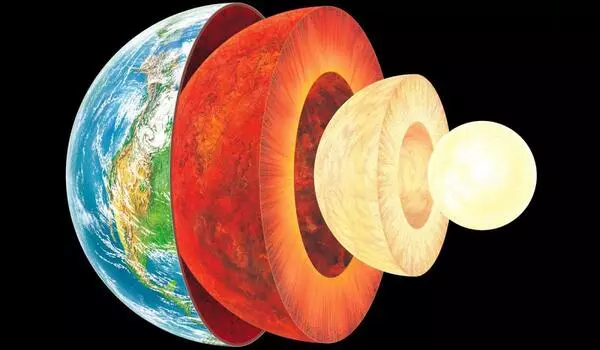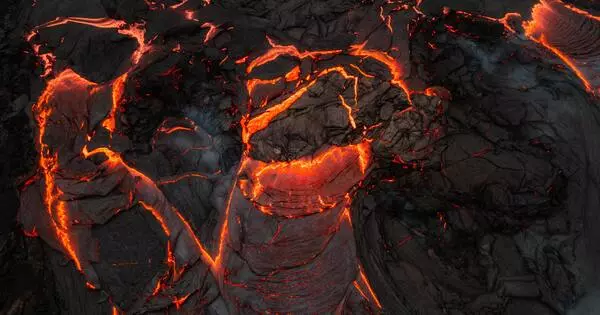A scientist determined that the ancient plume mantle (the deep part) had a water concentration that was 4 to 250 times lower than the upper mantle by analyzing noble gas isotope data. The Earth’s mantle is a thick layer of silicate rock that lies between the planet’s crust and its molten core, accounting for approximately 84 percent of its volume. On geologic time scales, the mantle is predominantly solid, but it behaves as a viscous fluid, making it as difficult to stir and mix as a pot of caramel.
But, if you must make a candy comparison, consider malt balls rather than gooey caramels. According to a study from Washington University in St. Louis, the deep part of the ancient mantle closest to the Earth’s core began significantly drier than the part of the mantle closest to the young planet’s surface.
Rita Parai, assistant professor of earth and planetary sciences in Arts & Sciences, discovered that the water concentration in the ancient plume mantle (the deep part) was 4 to 250 times lower than in the upper mantle by analyzing noble gas isotope data.
The resulting viscosity contrast may have prevented mixing within the mantle, which may help to explain some long-standing mysteries about Earth’s formation and evolution. The study appears in the Proceedings of the National Academy of Sciences (PNAS).
A primordial viscosity contrast may explain why the giant impacts that triggered whole-mantle magma oceans did not homogenize the growing planet. It also could explain why the plume mantle has experienced less processing by partial melting over Earth history.
Rita Parai
Mountain ranges reach for the heavens. The oceans sink to unfathomable depths. The Earth’s surface is a breathtaking sight to behold. Even the deepest canyon, however, is only a speck on the planet’s surface. To truly comprehend Earth, you must journey 6,400 kilometers (3,977 miles) beneath our feet.
“A primordial viscosity contrast may explain why the giant impacts that triggered whole-mantle magma oceans did not homogenize the growing planet,” said Parai, who is a faculty fellow of the university’s McDonnell Center for the Space Sciences. “It also could explain why the plume mantle has experienced less processing by partial melting over Earth history.”
Parai’s investigation challenges an assumption that was once widely held in her field: that Earth’s mantle was uniform from the start. When the solar system settled into its current layout about 4.5 billion years ago, Earth formed when gravity pulled swirling gas and dust in to become the third planet from the sun.

Volatiles like water, carbon, nitrogen and the noble gases were delivered to Earth as it formed, but Parai’s study suggests that the material that accreted earlier was a drier type of rock than what accreted later.
She discovered that mantle helium, neon, and xenon (Xe) isotopes require that the plume mantle had low concentrations of volatiles like Xe and water at the end of that period of accretion, compared to the upper mantle. The upper mantle may have benefited from a greater contribution of mass from volatile-rich materials, similar to a class of meteorites known as carbonaceous chondrites.
Parai investigates a planet’s life history in a multifaceted manner. This study in PNAS presents a model she developed, but Parai also conducts her own experiments with rock samples in her high-temperature isotope geochemistry laboratory at Washington University. She studies noble gas isotopes — especially those from Xe — in volcanic rocks to understand the evolution of Earth’s mantle composition and in terrestrial rocks at Earth’s surface to see the evolution of the atmosphere.
Scientists still know a lot about the inner structure of the Earth. They’ve drilled down into it by observing how earthquake waves travel across the planet. As these waves pass through layers of varying densities, their speed and behavior change. Scientists have also learned about the core and mantle from calculations of Earth’s total density, gravitational pull, and magnetic field, including Isaac Newton three centuries ago.
“In my lab, we take natural rock samples — mostly modern volcanic rocks, but also some ancient rocks — and try to understand various aspects of Earth history,” Parai explained. We’d like to know how Earth got its atmosphere, oceans, and other habitable features.”





